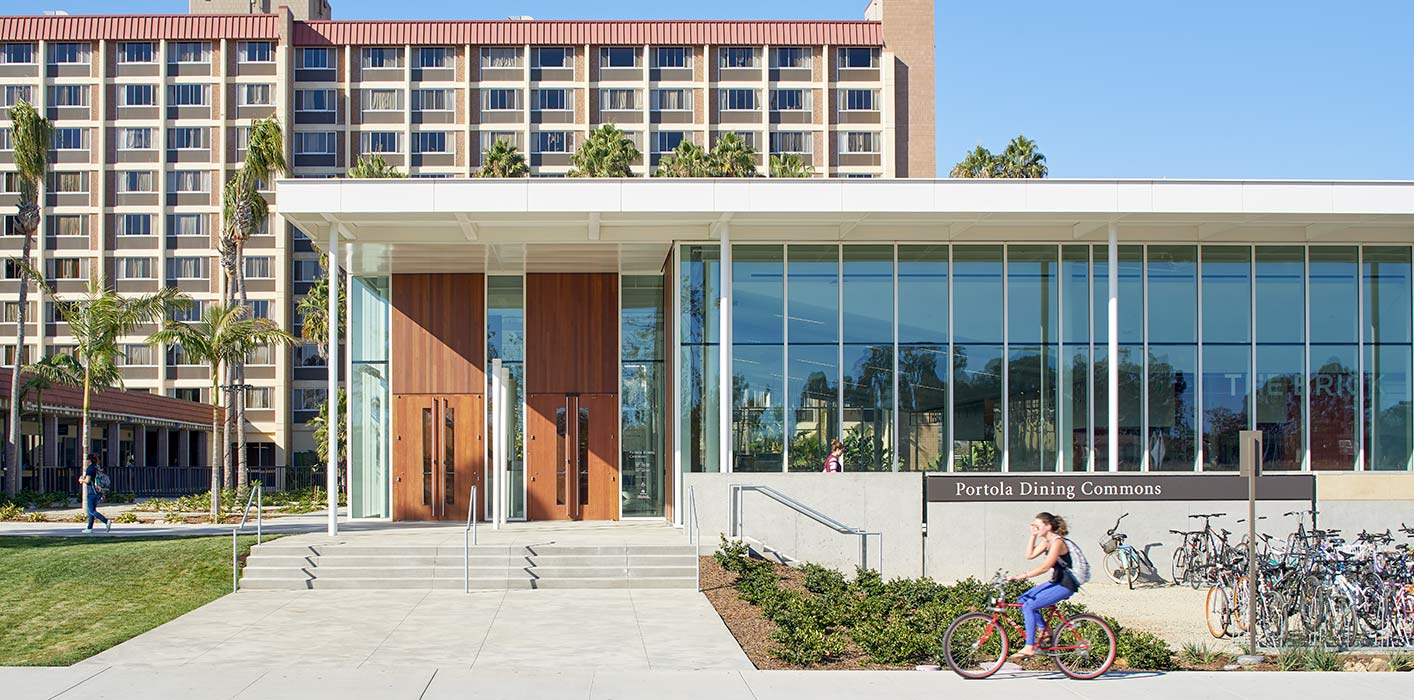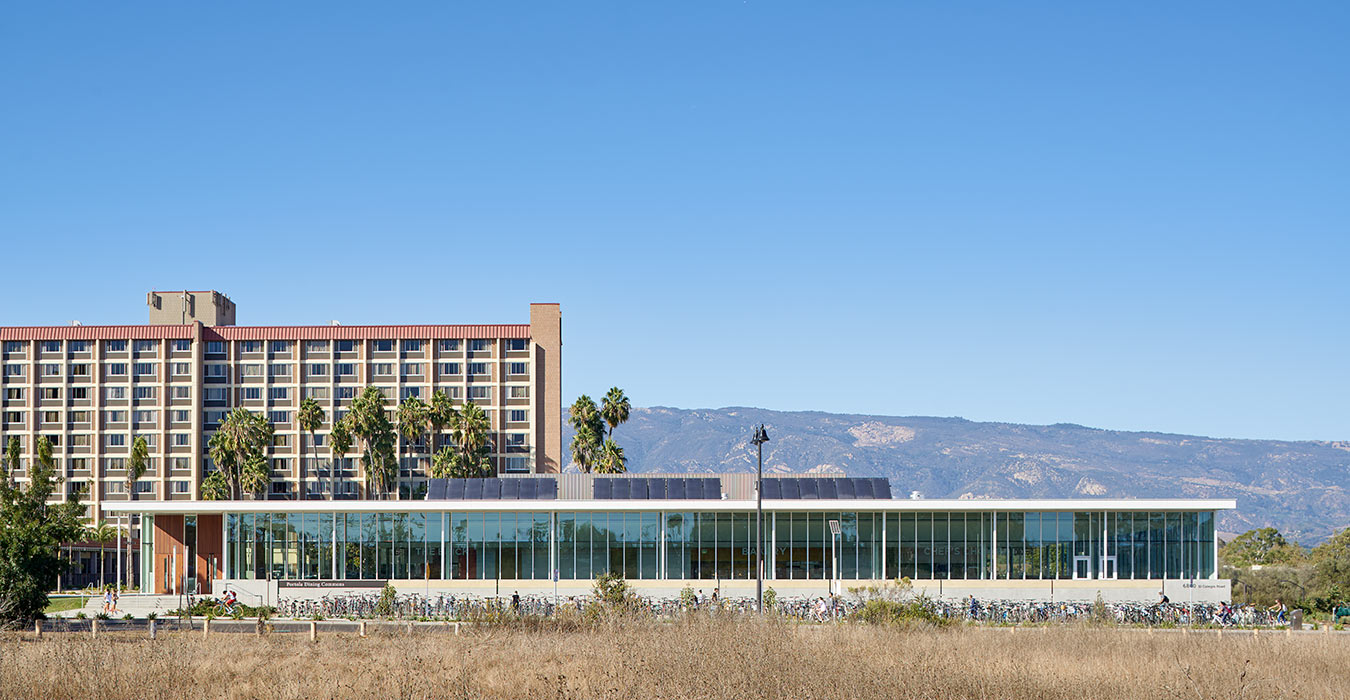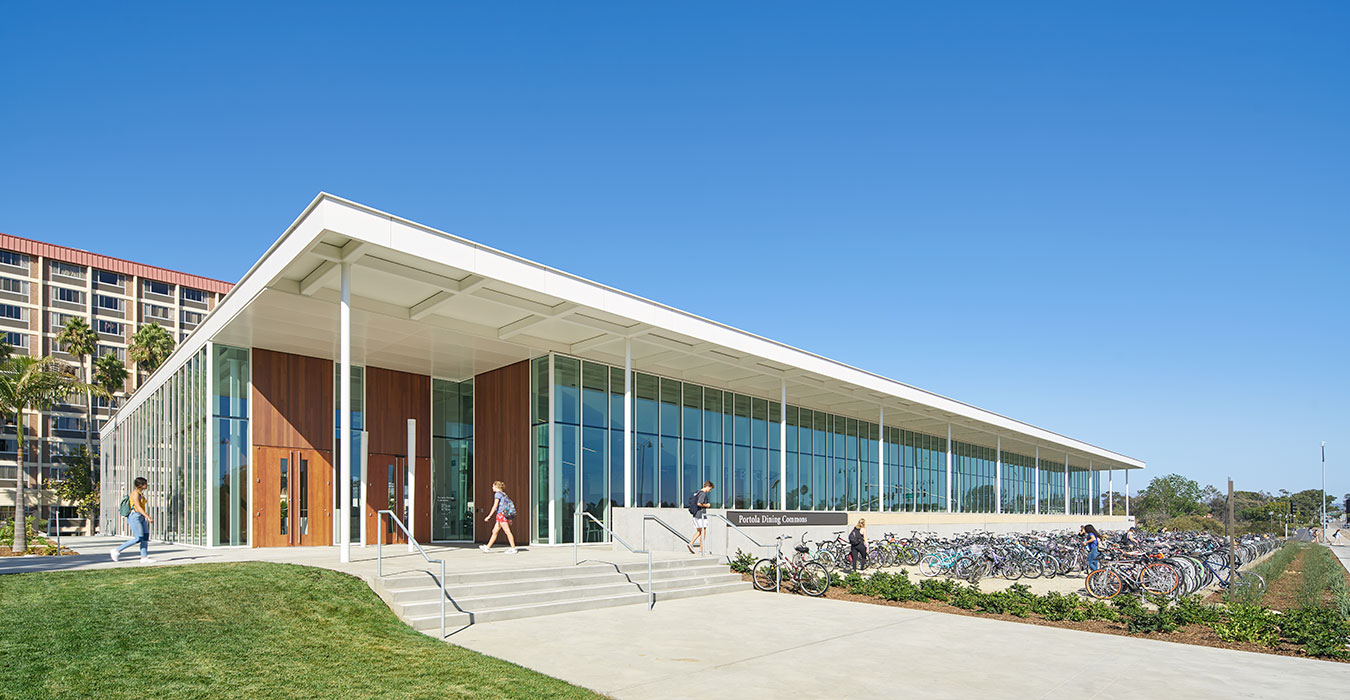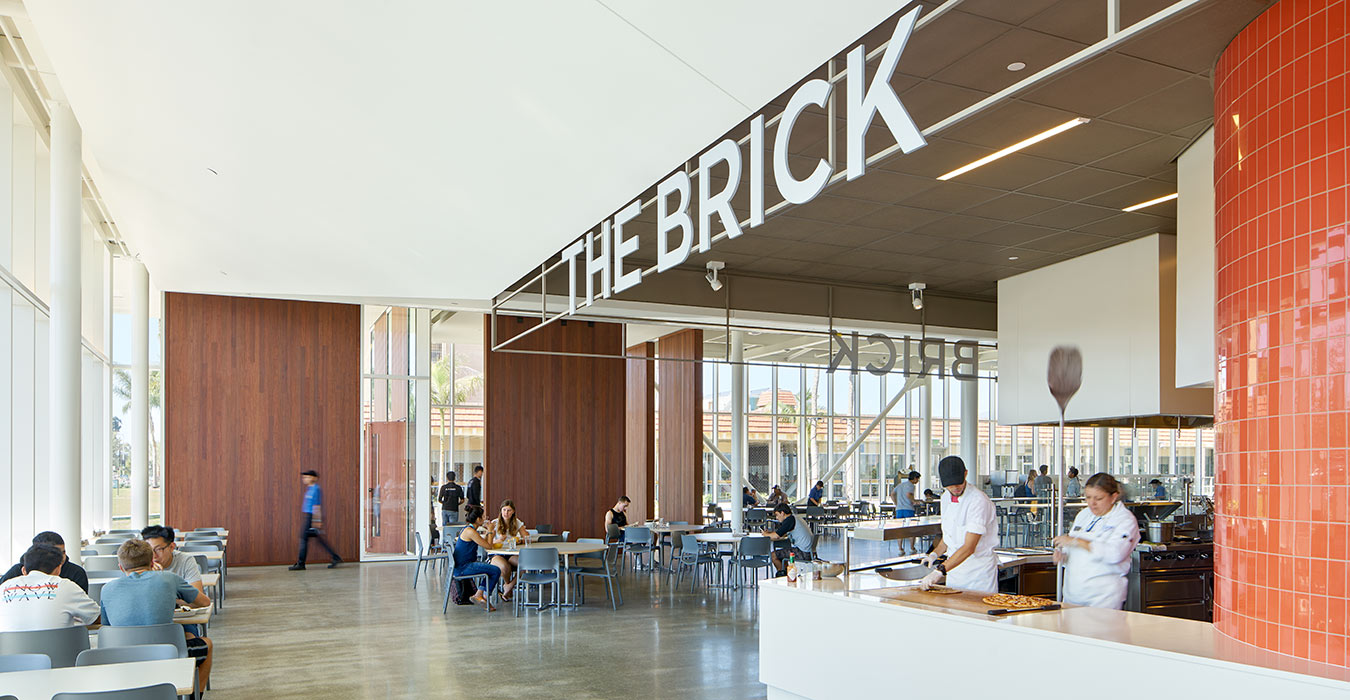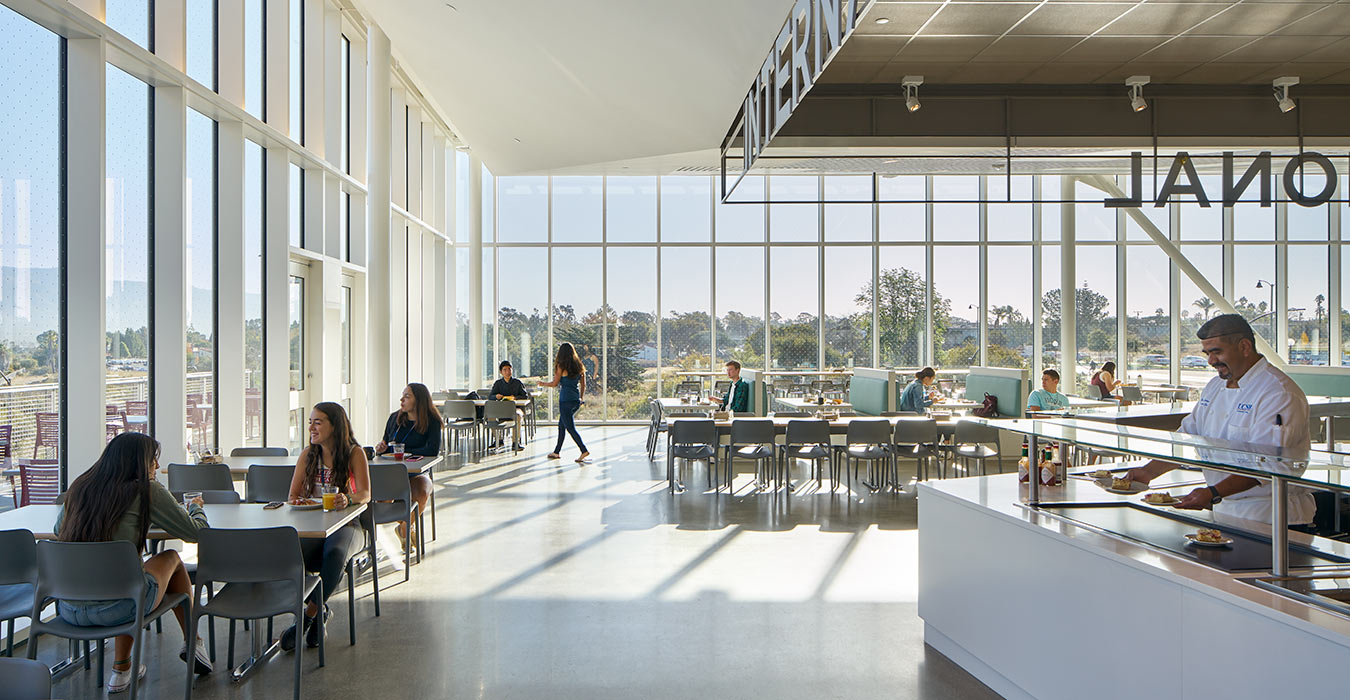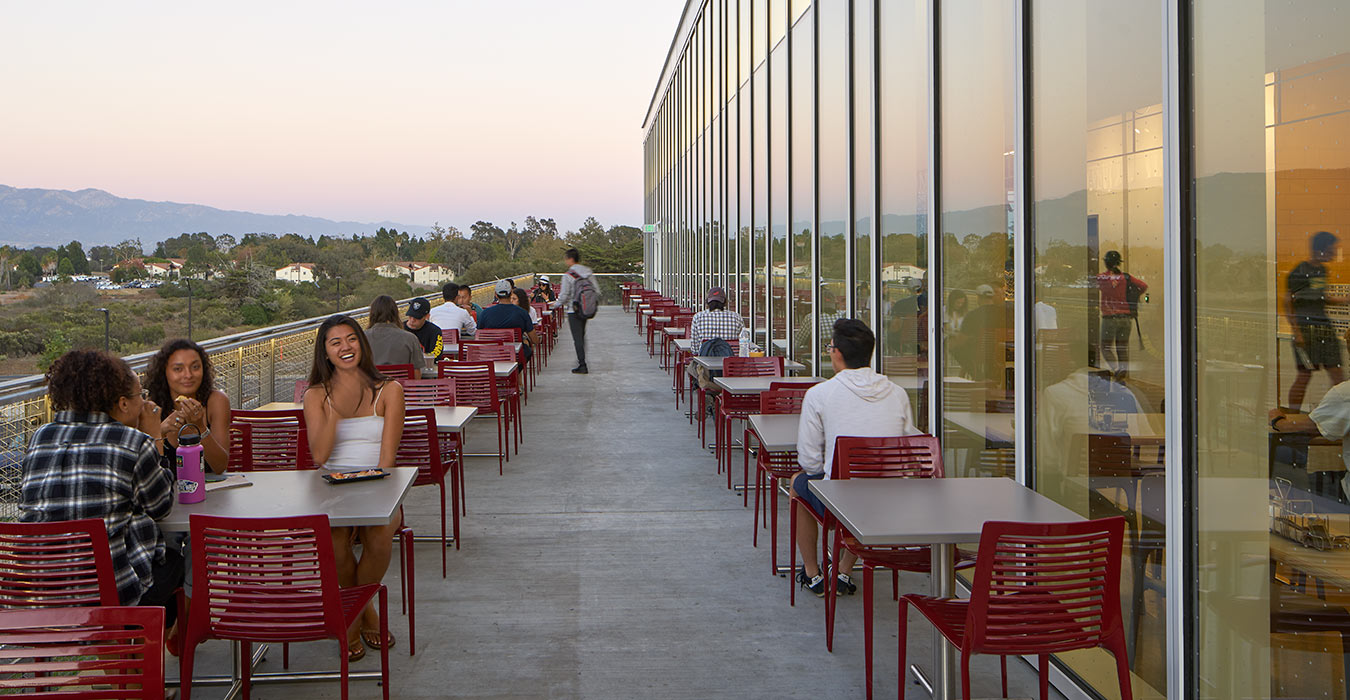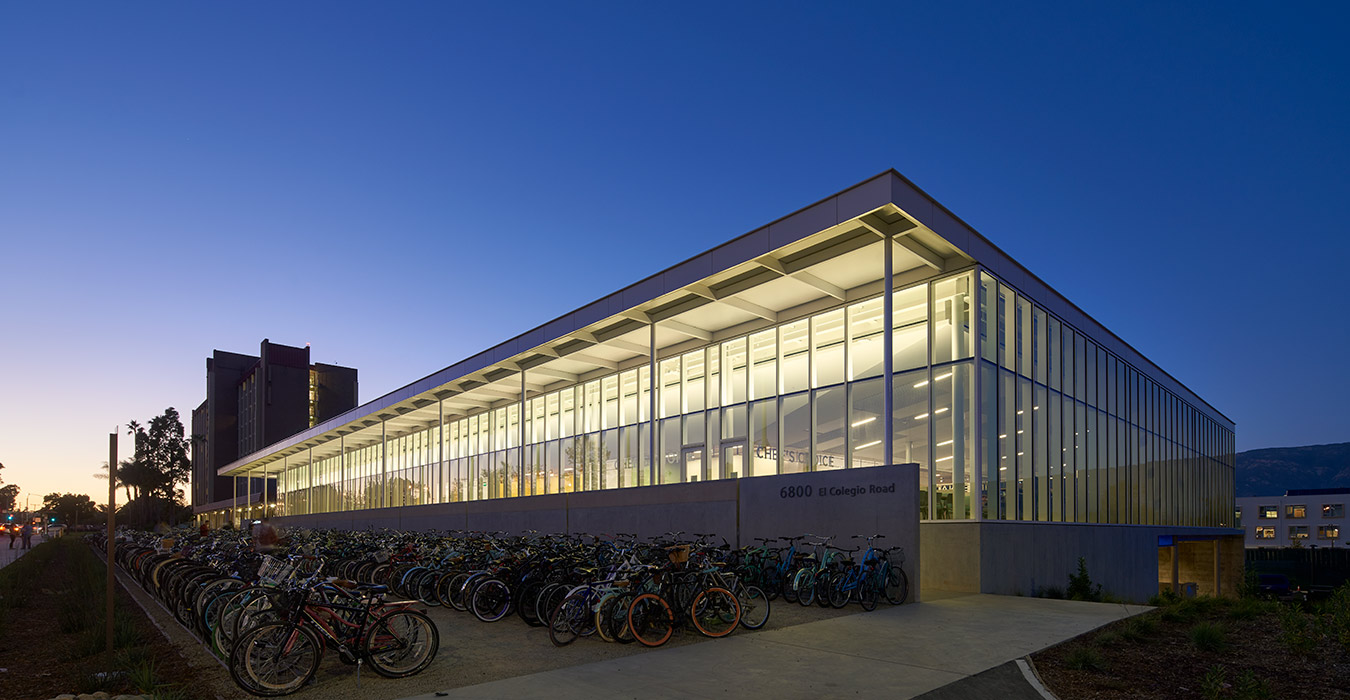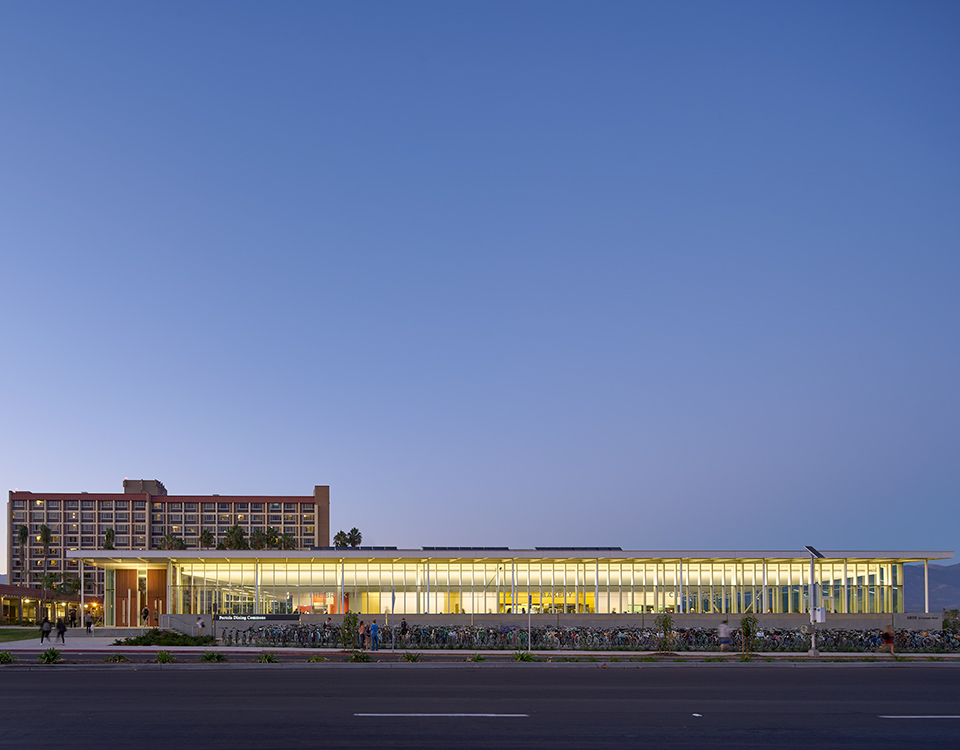How can we create an active social center that brings a sense of timelessness to a newly developed campus village?
When the University of California, Santa Barbara, purchased property approximately a mile from the core campus, they had a clear vision for its transformation. The former business park needed to incorporate low- and high-density student and faculty housing, a convenience store, and dining and student life facilities into an integrated complex that connects students to each other and the main campus. Dubbed the San Joaquin Villages, the University also wanted the complex to feel like a vibrant hamlet that developed gradually over time. To that end, four firms were selected to create a joint master plan, the components of which were subsequently designed and built by each firm to produce a mini-campus that is as architecturally, aesthetically, and programmatically rich as one that has evolved over time.
A BIG, BEAUTIFUL ROOM
The Portola Dining Commons is the geographic and programmatic center of the complex. Located at the front edge of the site along a public road, the Commons is the outward presence of and front door to San Joaquin Villages. While students certainly come to eat—the building can serve 800 people at one time indoors and out—they also come to gather and socialize in a place that feels like home. The building's openness and flexibility satisfies students' preference for variety and allows them to define their own social environment.
The transparent building lights up from within at night to create a beckoning, beacon-like front door to the larger complex .©Bruce Damonte
As the threshold for the San Joaquin Village, the building needed to attract visitors while also engaging the public road, transit networks, and campus bike paths as well as Santa Barbara's mountain and ocean scenery. Rather than compete with the dramatic landscape and bustling activity, the Commons is a “big, beautiful room” whose tall ceilings and full-height windows let the Santa Ynez Mountains and coastal landscape define the building.
The covered porch welcomes students into the dining hall and helps passively cool the building. ©Bruce Damonte
RESOURCE CONSERVATION
To conserve resources, the Commons incorporates passive shading strategies, low-energy and energy-efficient systems and appliances, and rooftop solar hot water heaters into its design. These solutions led to a LEED Platinum certification and were the result of a holistic and collaborative approach to sustainability. Working closely with the University, project consultants, and construction team, our design team created a sustainable and timeless building that is precisely suited Santa Barbara's unique culture and climate.


